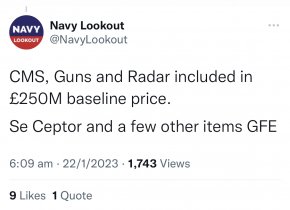We had four FFG that underwent the upgrade.Actually to crew three AWDs and 6 light frigates they may well have to pay off the entire ANZAC fleet. I am not entirely sure where this leaves the Hunter class. There is no chance of it being cancelled but if this were to go ahead I could see the program being slowed down.
This is why I see three AWDs as being unlikely since their introduction could delay the Hunter program even more.
Sydney decom in 2015 Hobart active in 2017
Darwin decom in 2017 Brisbane com in 2018
Melbourne decom 2019 Sydney com 20201
Newcastle decom 2019 --- No replacement 4th AWD never stupidly built
So there is a crew for a whole AWD just wasted because of a lack of replacement
Adelaide and Canberra were decom in 2005 and 2008. The last Anzac was 2006, so in theory we also lost at least one whole surface combatant crew there as well. So we have been running down the fleet for the last 20+ years. We were doing it right into 2019 and 2020. 2020 saw some return during covid.
Really we should have replaced the 6 ffg's with 6 hobarts.
Corvettes will require less crew than Anzacs. Probably by half. So 6 corvettes may require the same crew as 3 anzacs.
Yes, the RAN should start recruiting at all levels frantically.

